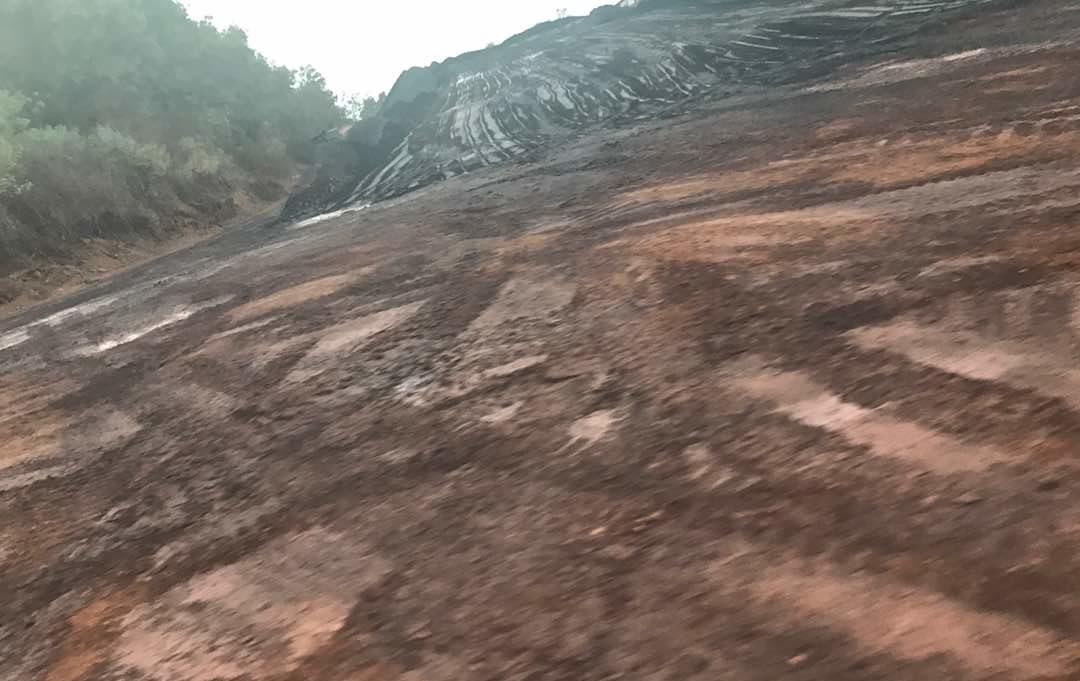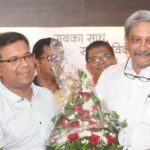Goa: The issue of pollution caused by the trucks that carry iron ore from the mining leases to the jetties is as old as the mining industry itself. The rising demand from China in the run up to the Olympics fuelled the state’s iron ore demand. That is why the people living in the mining belt have borne the increasing pollution since 2005.
Certain villages in Sattari, Sanguem, Bicholim and Quepem talukas are so showered by this pollution that life with mining dust has become the order of the day. It was in 2012 that the people began to openly speak about their lives in the mining belt. It was the time when authorities began talking about illegal mining.
Pure air is the birth right of every citizen, but it is a privilege denied to the people residing in the mining areas. Villages like Pale, Velguem, Sonshi, Surla have virtually turned into mining dumps. There is no farming happening there, except for a few traditional ‘kullaghars’ which too are struggling to cope with the pollution.
Those people who were earlier slogging in their farms have now turned into mining dependents. The Gawda community people who made the hills and plains as their homes and cultivated paddy are no more getting their hands soiled in the fields. Their hands are now covered with mining dust.
Owning a truck or driving it is not a big deal for those who have lost their land to the mining firms. This is how they have made quick money. While some have scaled greater heights in the economical hierarchy, there are some still struggling.
All these bare facts about the mining industry were never discussed by the media until 2012 when the M B Shah Commission compelled Goa to discuss about illegal mining and pollution.
It was only then that we realized there are two kind of people, one mining dependents and another mining affected. The mining leases were really turned into personal properties where no one could even peep into. Several journalists had to face the wrath of security guards when they tried to click pictures. Cases of trespassing were filed against them.
The mine owners remained out of bound of the locals. The big business houses had sub-leased their iron ore extraction to others. That is where the illegal mining bred. But that is not what we are going to discuss now. That has been spoken about post-2012 when people realized that it is their right to know how much extraction was being done by the mining firms.
Environment protection is never on the mind of the mining firms. You cannot have mining and environment go hand in hand. Dust has to fly where there is drilling into the Earth to tap iron ore. But how much pollution can be allowed?
There is no parameter. The locals in the mining belt tell of how officials of Goa State Pollution Control Board (GSPCB) indulge in mere eye washing in the name of measuring the purity of air or water.
You actually don’t require any machine to measure the pollution here. They can very well make one of their officers wear a white shirt and stand on any of the roads where iron ore is carried. His shirt will turn maroon in no time and he will gasp for breath. This is what pollution actually means.
No amount of data analysed in the laboratories of GSPCB will save the people from facing the actual pollution. Look at the roof tiles of the houses in these area, they have a tale to tell. Once upon a time, they had their original colour.
When we talk of scientific and environment friendly mining, there must be some method to control pollution. I am sure there are methods, but they must be expensive and hence cutting into the profits of the mining firms. They would naturally not spend on saving lives which are dying a slow death.
There are no studies conducted on how many people in this mining belt suffer from lung diseases. Even if there are studies, they are buried deep in the files of the Government. There is no action taken on them.
Several villagers here are living a life of slavery. They have no voice. If they stop the transport machinery, they are sent behind bars. Asking for clean air is an offence in our democratic state.
The mining firm officials who are sitting in their air-conditioned head offices in Panaji don’t miss a single meeting if called by the Chief Minister. But when it comes to directly interacting with villagers, only low level officials are sent. Then the press notes are issued to convince the world how they (mining firms) are environment friendly and people friendly.
Let’s forget for the time being about the illegal mining and how crores of rupees were looted by the mining firms. We need to talk about the pollution in this belt.
The real Goenkarponn would be to give a patient hearing to these Goenkars. We know that they have been demanding employment in the mining firms. But don’t mix their concerns of pollution with their demand of employment. Several times we see politicians and mining firms doing this.
Let’s visit these villages where wells have dried up long back as the mining pits have gone much below the water level. The villagers are dependent on the water that is provided to them through water tanker-mounted trucks. These tanks are corroded. The water is then shifted to barrels which are lined up along the road, amidst the dust. The polluted water is then taken to every house and drunk.
Such is the pathetic situation. The main roads which are constructed by spending money from our taxes are being used to transport iron ore. Thousands of trucks ply on these roads, leaving no space for the tax payer to ride his two-wheeler. He has to constantly dodge the gigantic wheels of the trucks which can crush him any time. When the State government speaks of a mining corridor, the idea is always pushed into the files, with no follow up.
When we talk about our beautiful Goa with beaches, let’s also talk about this part of Goa which is breathing dust every passing hour. While people are suffering, those few who make money are either in their air-conditioned homes or have already shifted their base out of Goa.



























